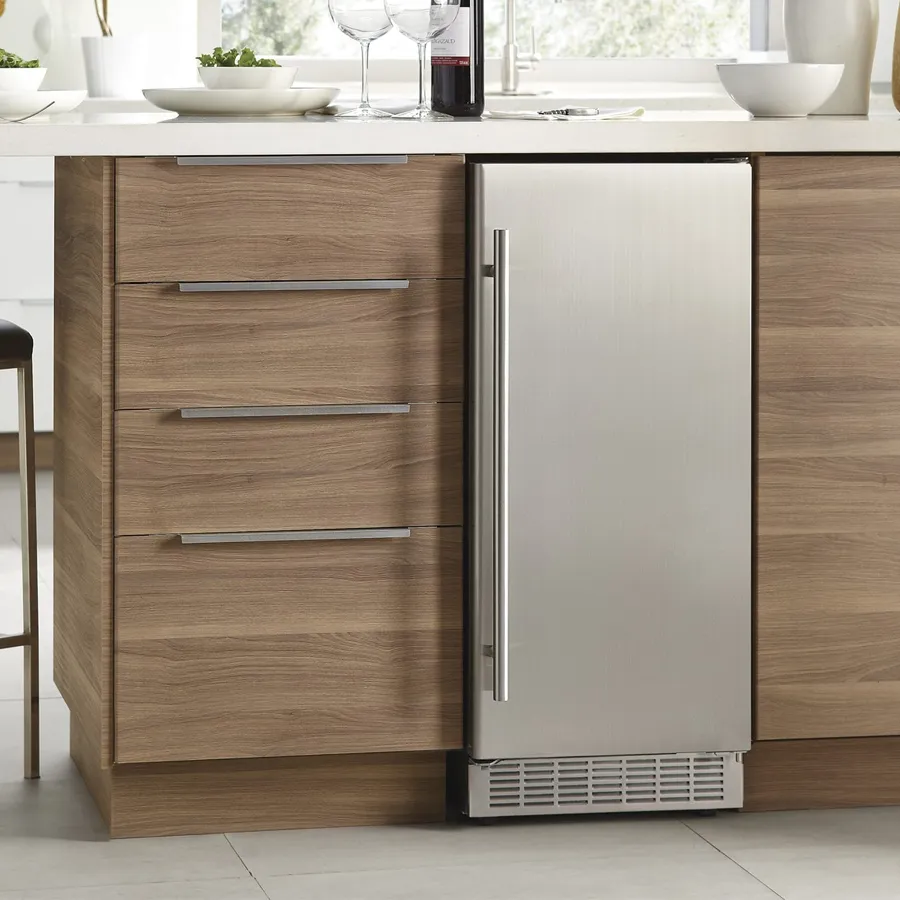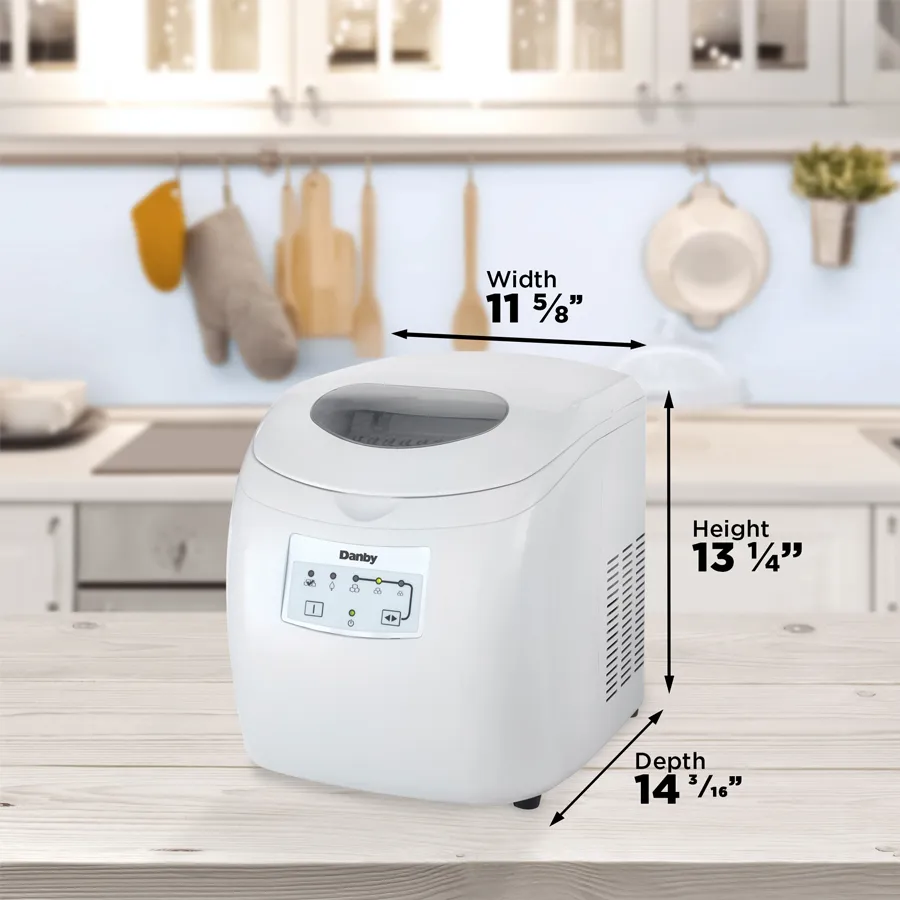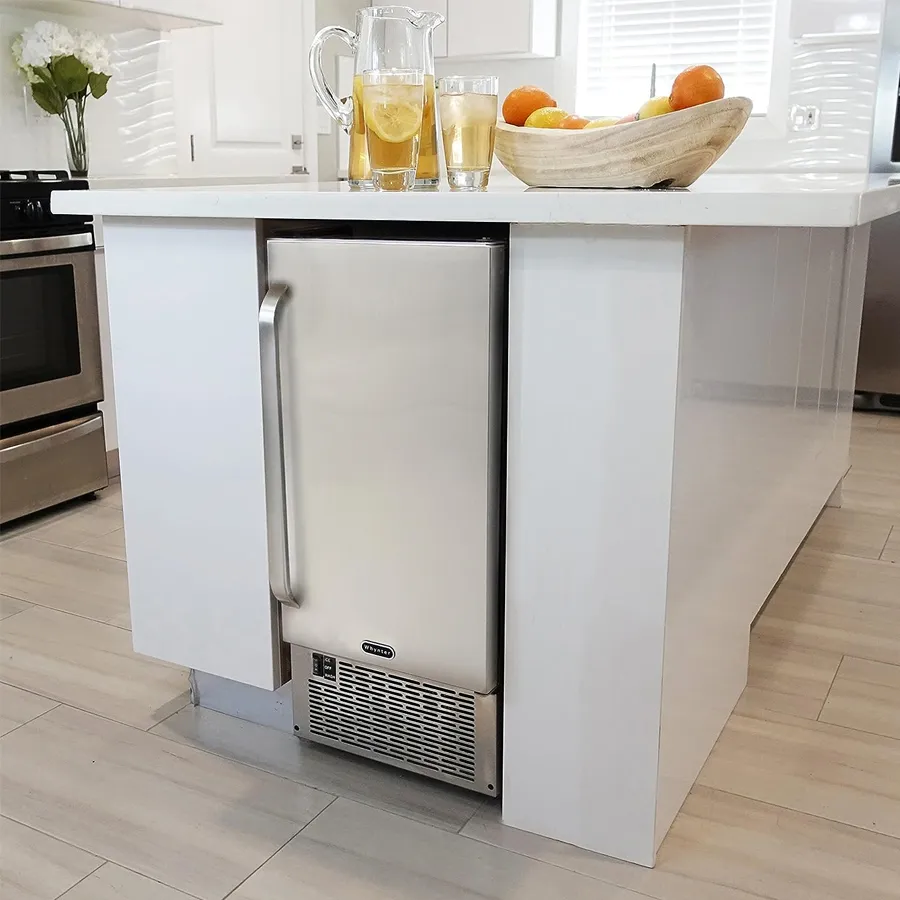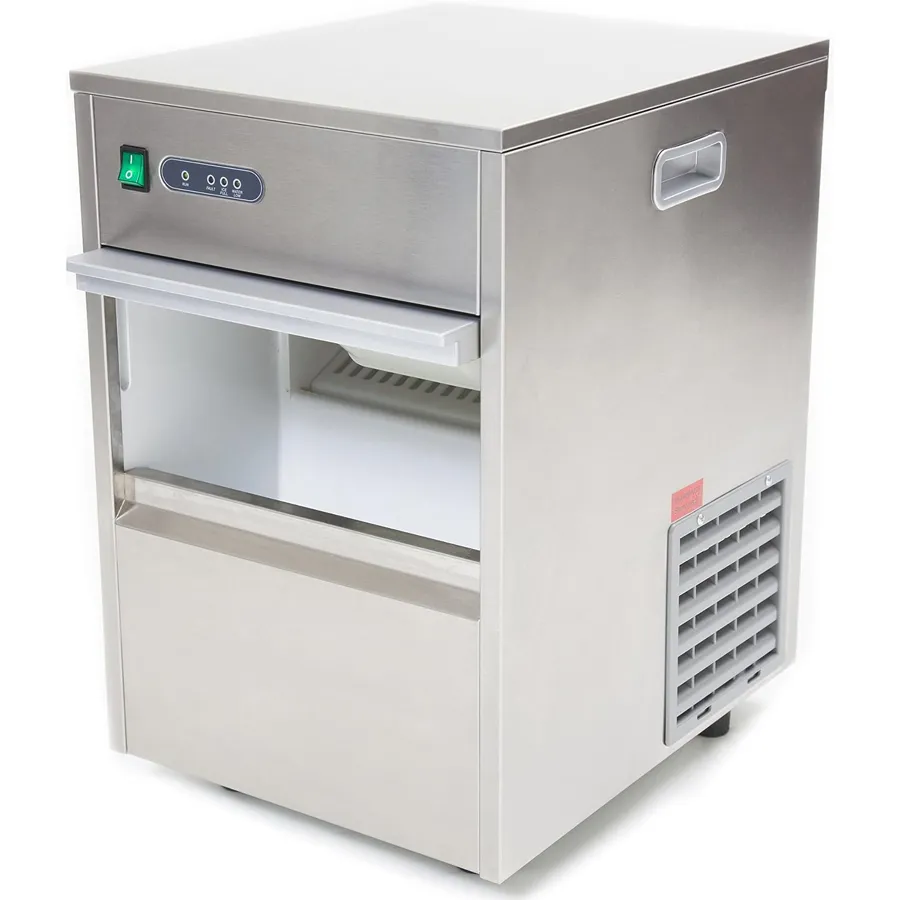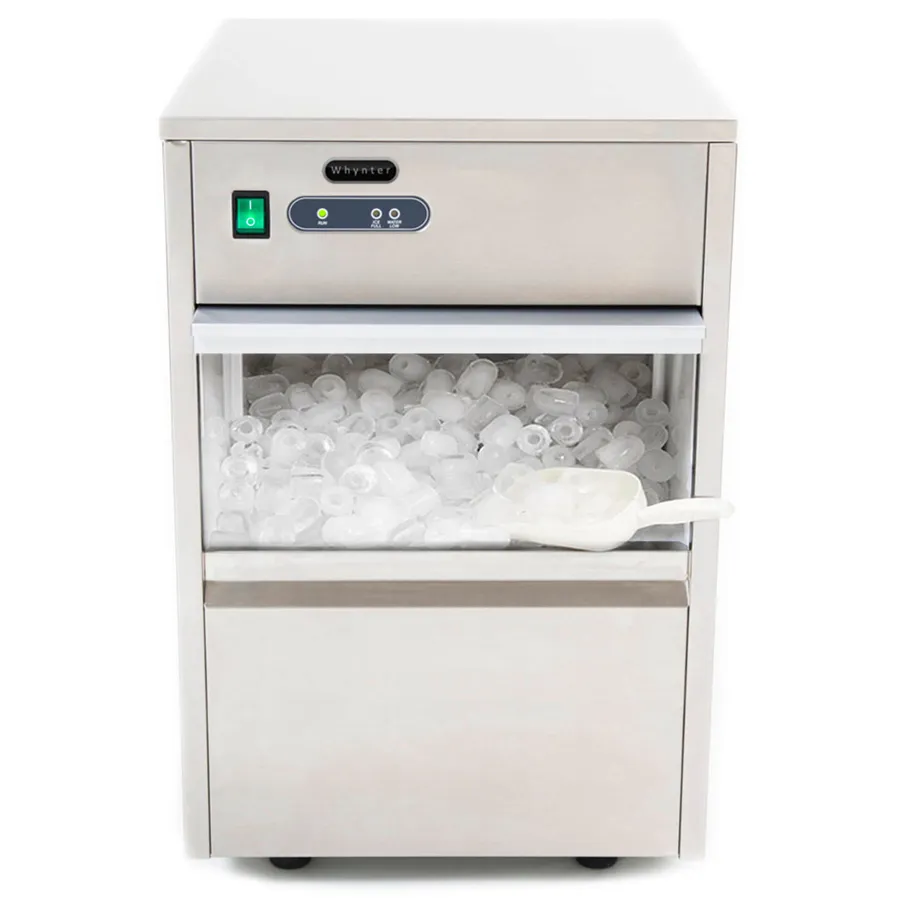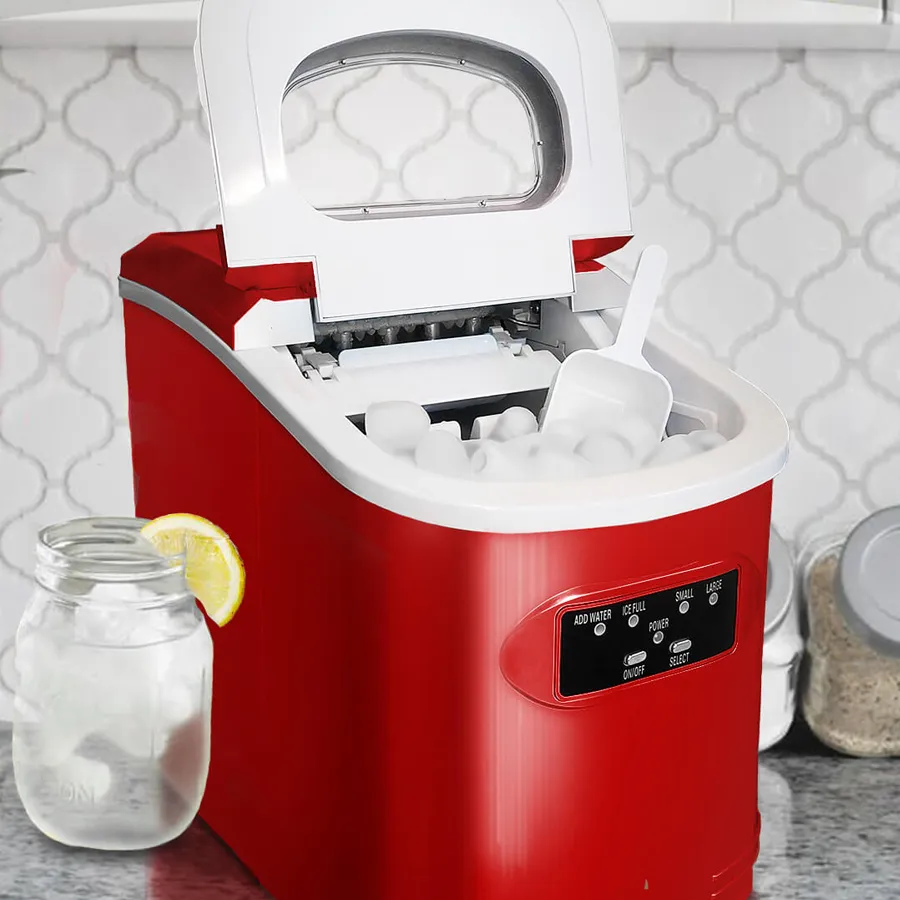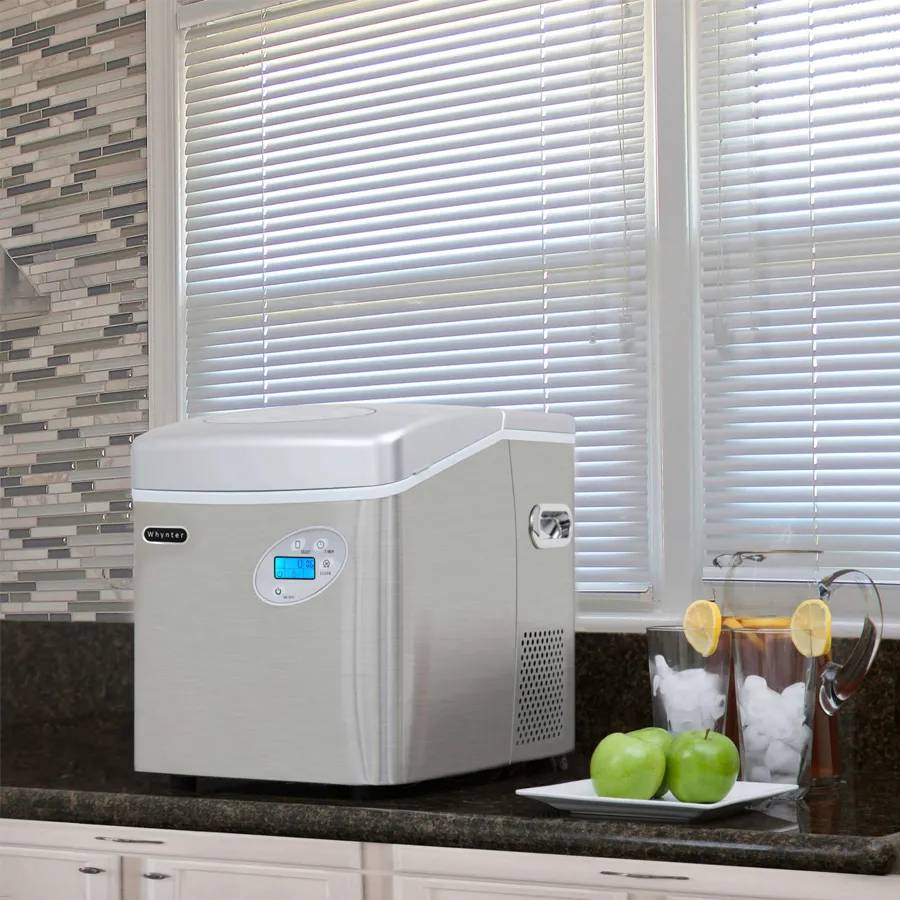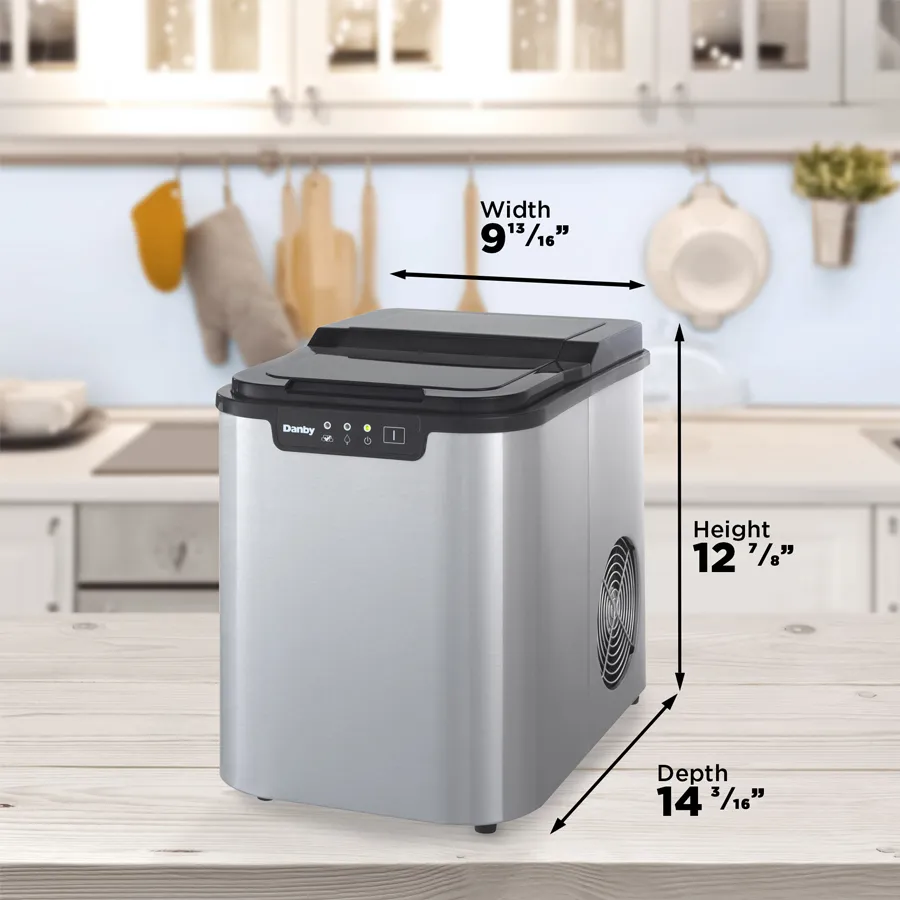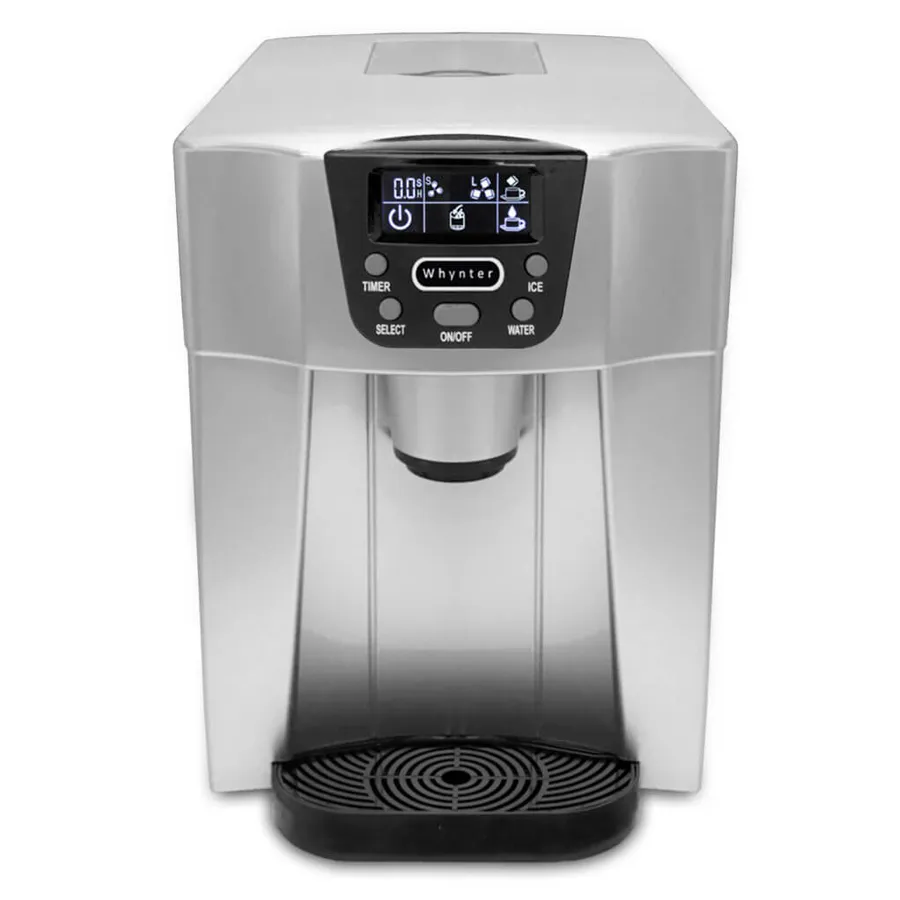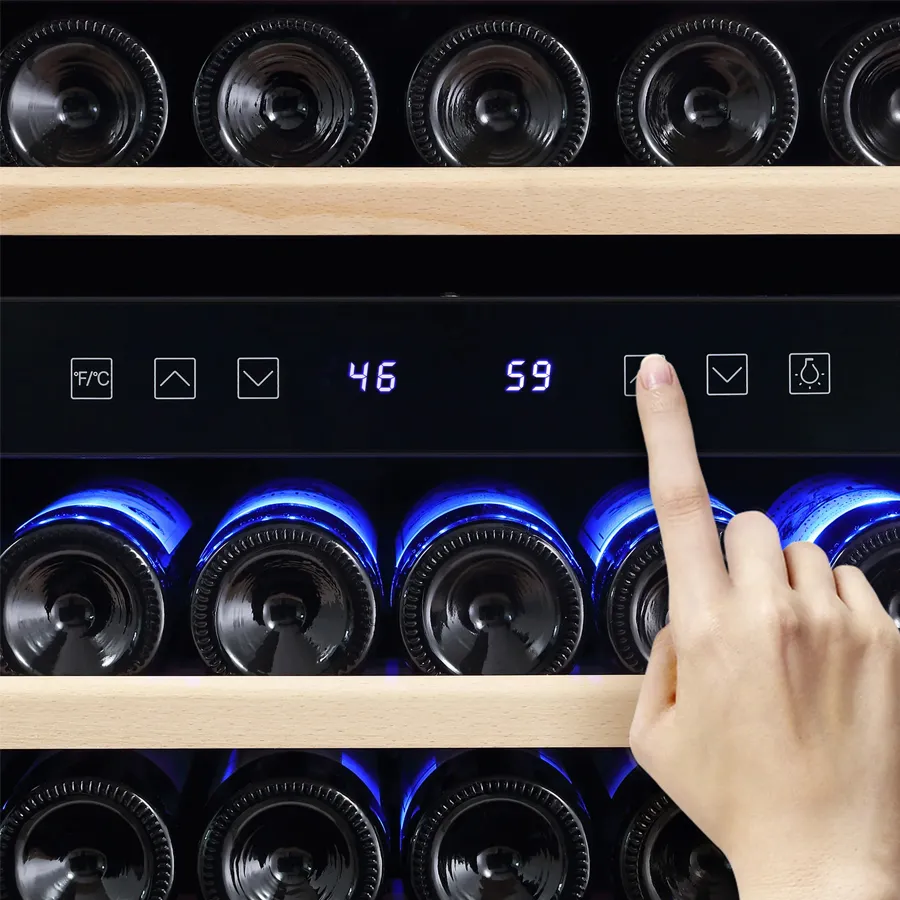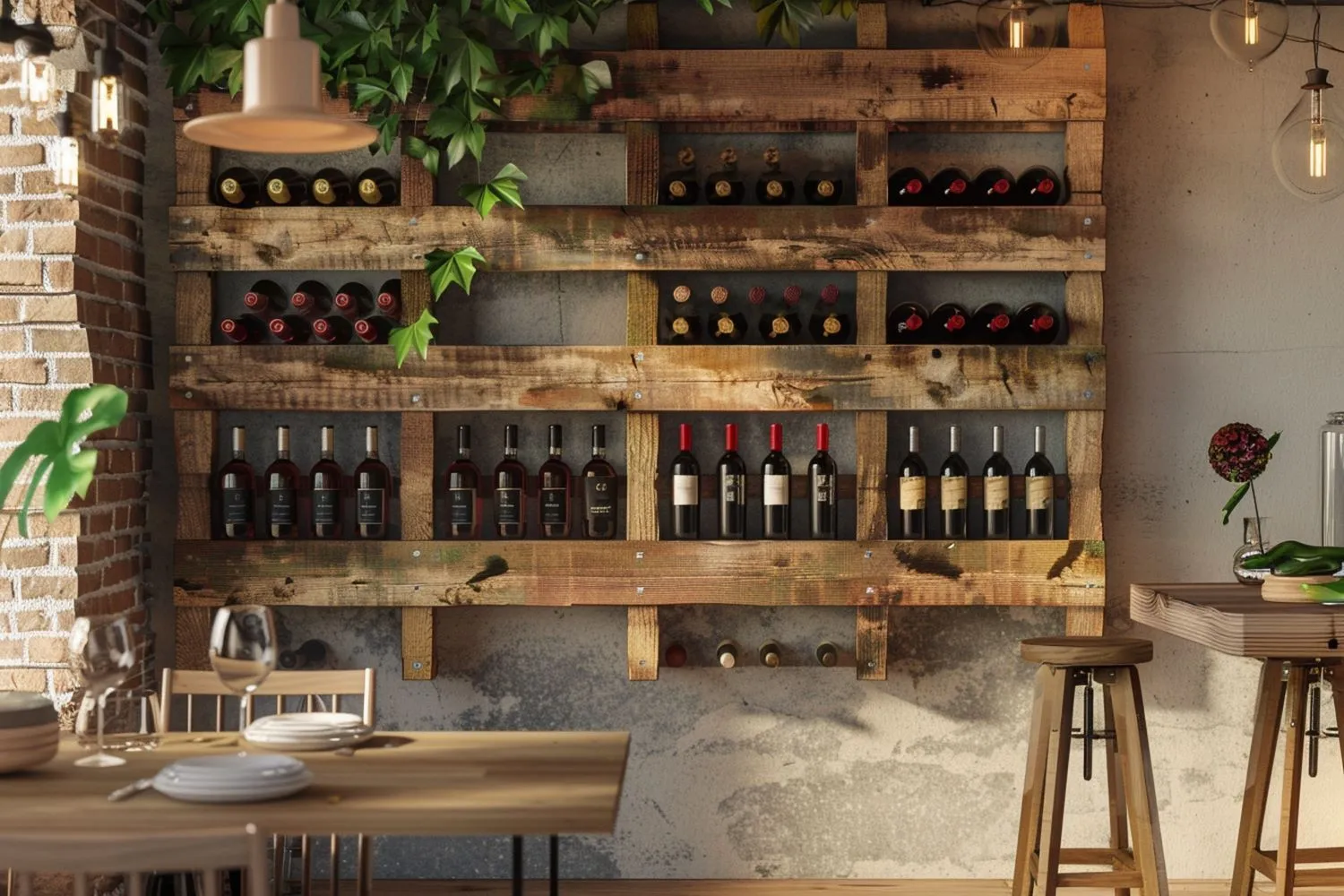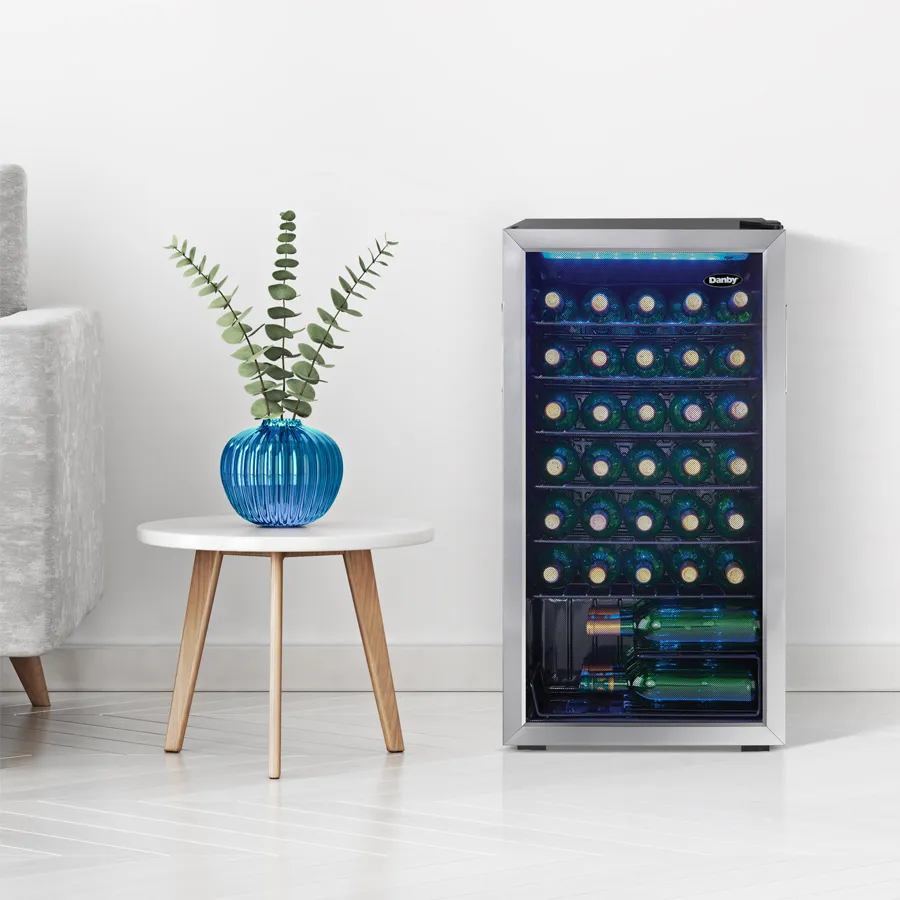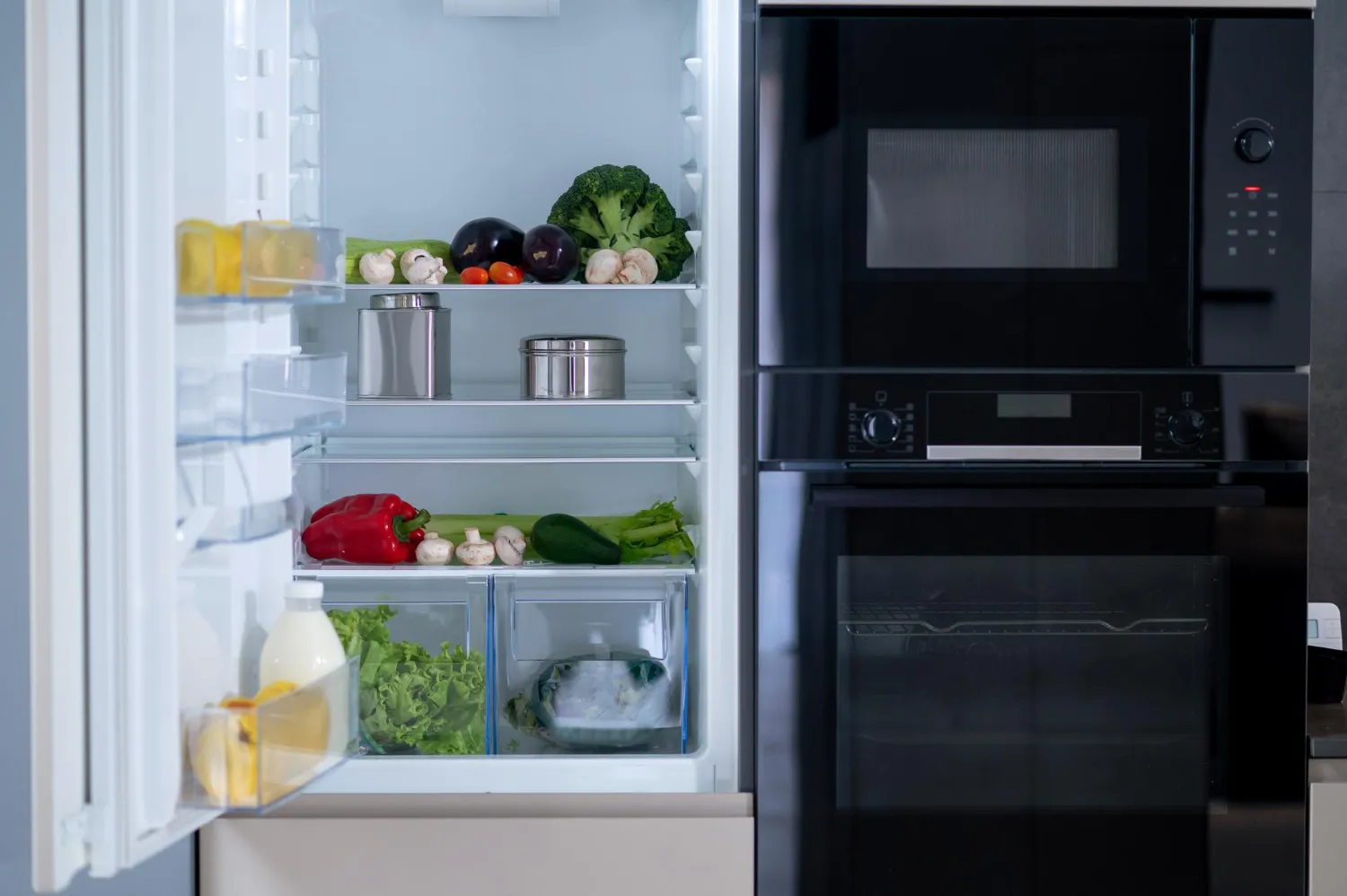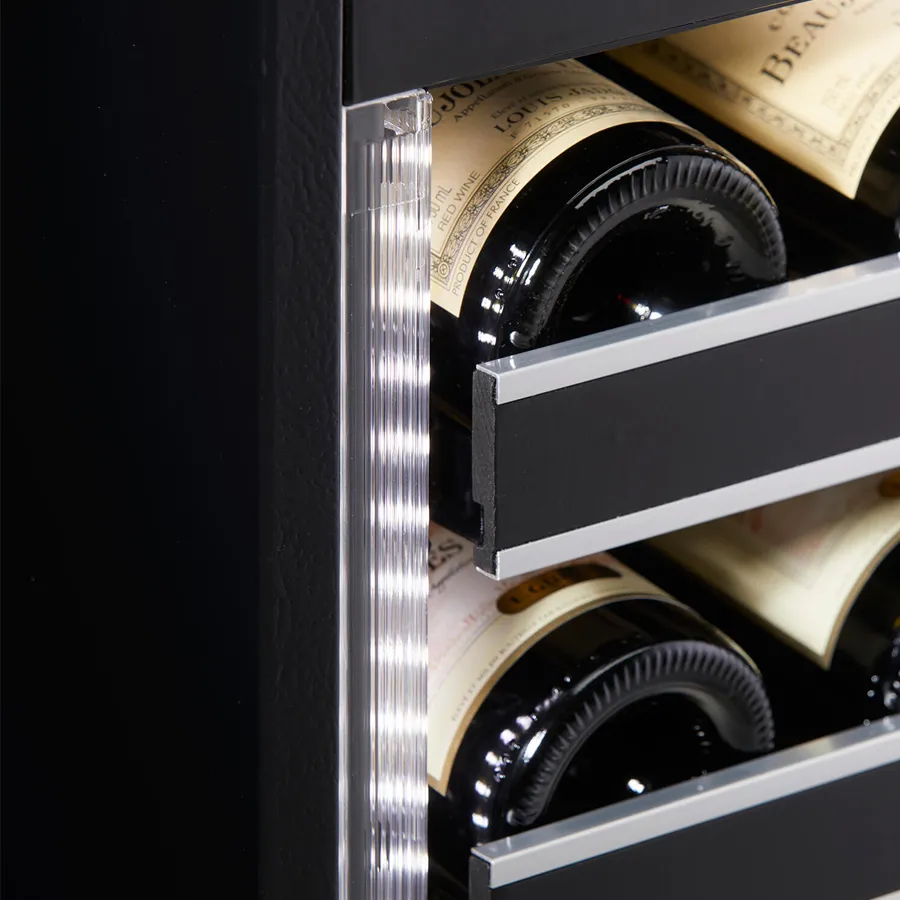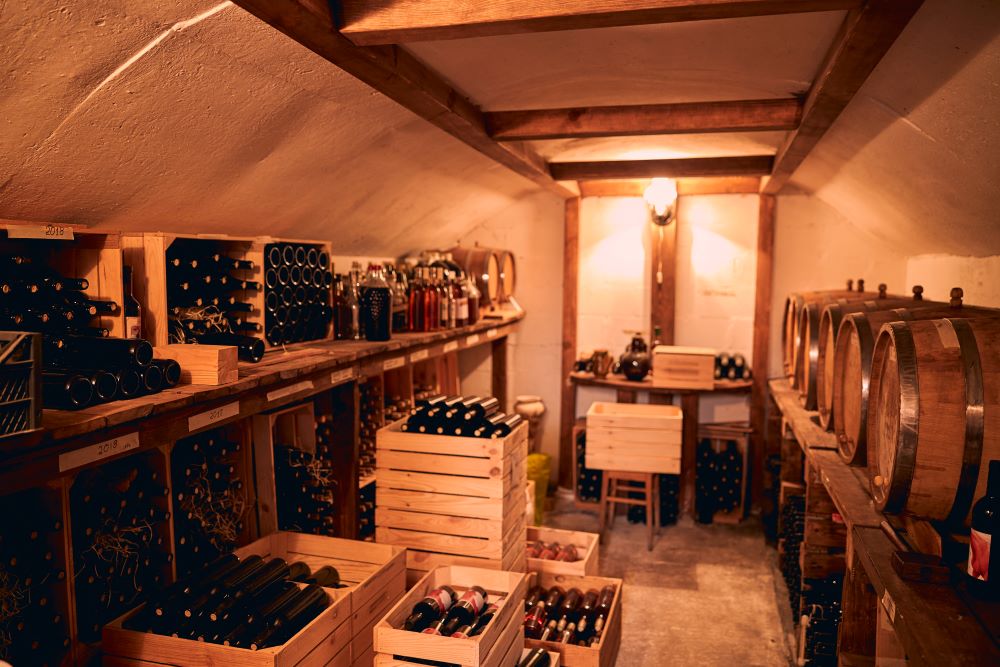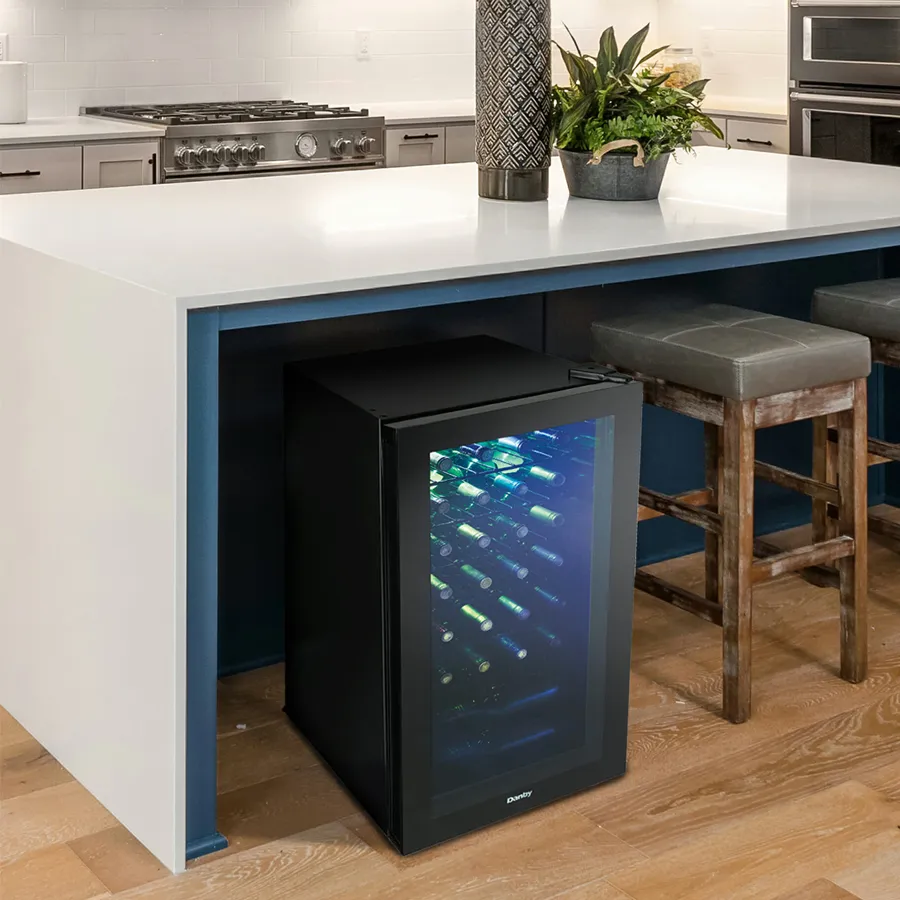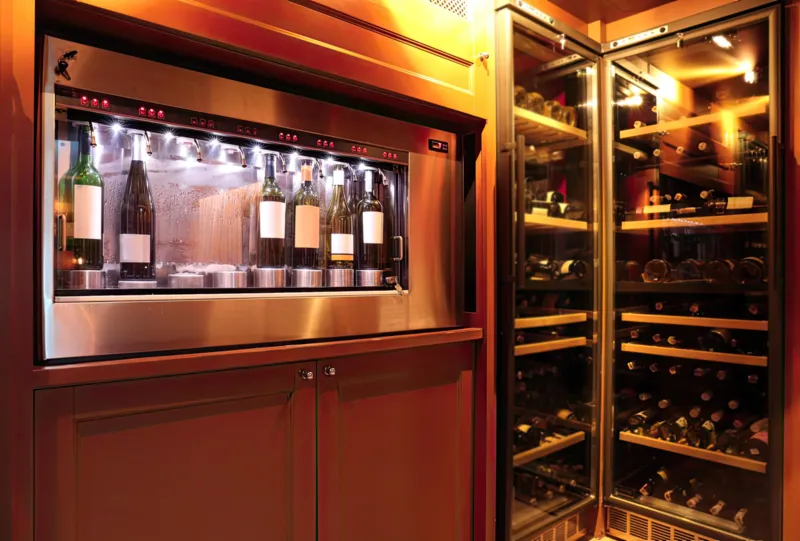You should be familiar with the many kinds of ice makers on the market before purchasing one for your house or place of business. There is a marked difference in the amount and quality of ice generated by using the wrong kind of ice maker compared to using the correct one. Whether you’re shopping for an under-counter model, a freestanding model, a countertop model, or a portable ice maker—this page will help you narrow down your options. Some of the most common types of ice makers include:
| 1. Portable Ice Makers | 4. Commercial Ice Makers |
| 2. Built-in and Undercounter Ice Makers | 5. Countertop Ice Makers (or Tabletop Ice Makers) |
| 3. Freestanding Ice Makers (or ice maker stand-alone) | 6. Ice Dispensers |
Undercounter Ice Makers
If you want to buy an Ice maker and are short on counter space in your kitchen or bar, an under-counter ice maker is a perfect solution because of its compact form. There is a wide range of sizes and capacities available for these ice producers, allowing you to find the perfect one for your needs. If you’re short on counter space in your bar or kitchen, an undercounter ice machine is a great investment. You may save precious floor space by placing them under your countertop.
They are perfect for smaller kitchens or bars with limited space because of their compact design, which makes installation straightforward even in tight places. The majority of homes with bars, outdoor kitchens, or both have ice machines installed under the counter. They are also well-liked in business settings like cafes and restaurants. Connecting the ice maker to the water supply and drainage system is a common installation task. You have a lot of leeway in choosing an undercounter ice maker to fit your area because many of them have reversible doors.
Pros and Cons
| Pros | Cons |
| Space-saving design | Potential for more complex installation |
| Convenient access to ice | May require professional installation |
| Custom panel-ready options for seamless integration | May have smaller ice production capacity |
| No mobility |
Freestanding Ice Makers
Now let’s take a closer look at freestanding ice makers. These types of ice makers are designed to be standalone appliances, meaning they don’t need to be built into cabinetry or require a countertop for support. Freestanding ice makers are a popular choice for those who want a dedicated unit for producing ice without taking up valuable counter space.
In addition, One must take into account a handful of important distinctions when contrasting under-counter ice makers with freestanding units. The two kinds can be set up independently, although the freestanding ice makers tend to be bigger and have more ice-making capacity than the under-counter ones. But, for a more understated appearance, you can place an undercounter ice maker beneath a counter or bar.
Pros and Cons
| Pros | Cons |
|---|---|
| Efficient Ice Production | Requires Manual Water Filling |
| Dedicated Ice Production | Limited Storage Capacity |
| Flexible Placement Options | Regular Maintenance |
| Independence from Refrigerator | Space Requirements |
| Variety in Ice Types | Noise Level |
| Potential Initial Cost |
Countertop or Portable Ice Makers
Not everyone has the space or need for a large, freestanding ice maker. That’s where countertop ice makers come in. These compact and efficient machines are designed to fit on your kitchen counter, providing a convenient and reliable source of ice without taking up a lot of space. Countertop ice makers are perfect for situations where convenience and portability are essential.
Whether you’re hosting a small gathering, enjoying a BBQ, or simply don’t have the space for a larger unit, a countertop ice maker can provide you with a steady supply of ice without the hassle of constantly refilling trays or purchasing bags of ice from the store. Their compact size and lightweight design also make them easy to transport, so you can bring them along on camping trips, picnics, or to your RV.
Pros and Cons
| Pros | Cons |
|---|---|
| Compact and Portable | Limited Production Capacity |
| Convenient and Efficient | Power and Water Source Considerations |
| Ideal for Limited Spaces | Size and Production Capabilities |
| Versatile Usage Scenarios | |
| Power Options |
Commercial Ice Makers:
Businesses such as restaurants, bars, and hotels require ice makers capable of high-volume production. Commercial ice makers are specifically designed to meet these demands. With the ability to produce large quantities of ice quickly, these units ensure a steady supply to meet the needs of a bustling commercial environment.
They are efficient and reliable and require minimal maintenance. They also have a variety of features, such as ice types, adjustable ice size, and thickness, that make them versatile for a variety of businesses. Some models are energy-efficient and environmentally friendly, reducing the amount of energy used and waste produced.
Pros and Cons
| PROs | CONs |
| High-volume ice production | Large and heavy |
| Designed for commercial use | Higher upfront and operating costs |
| Durable and robust construction | Requires professional installation and maintenance |
Water & Ice Dispensers:
Ice Dispensers are a convenient way to get ice when you need it. They usually come with a built-in ice maker that produces ice in just a few minutes. Many models also have an automatic shut-off feature that prevents ice from overflowing. Integrated with water dispensers, ice dispensers offer a convenient way to access ice without the need to open the freezer. Often found in refrigerators with built-in ice and water dispensers, these units provide a user-friendly experience for both residential and commercial settings.
Pros and Cons
| PROs | CONs |
| Convenient access to ice and water | May require a water line hookup |
| Integrated design in refrigerators | Limited ice storage capacity |
| User-friendly experience | Potential for malfunctions and repairs |


